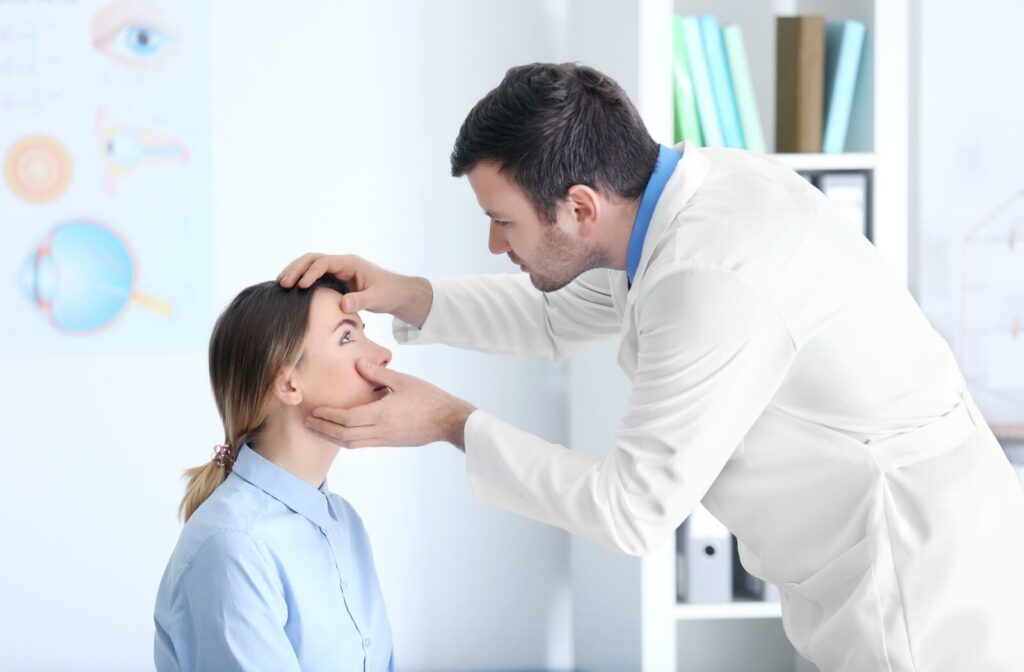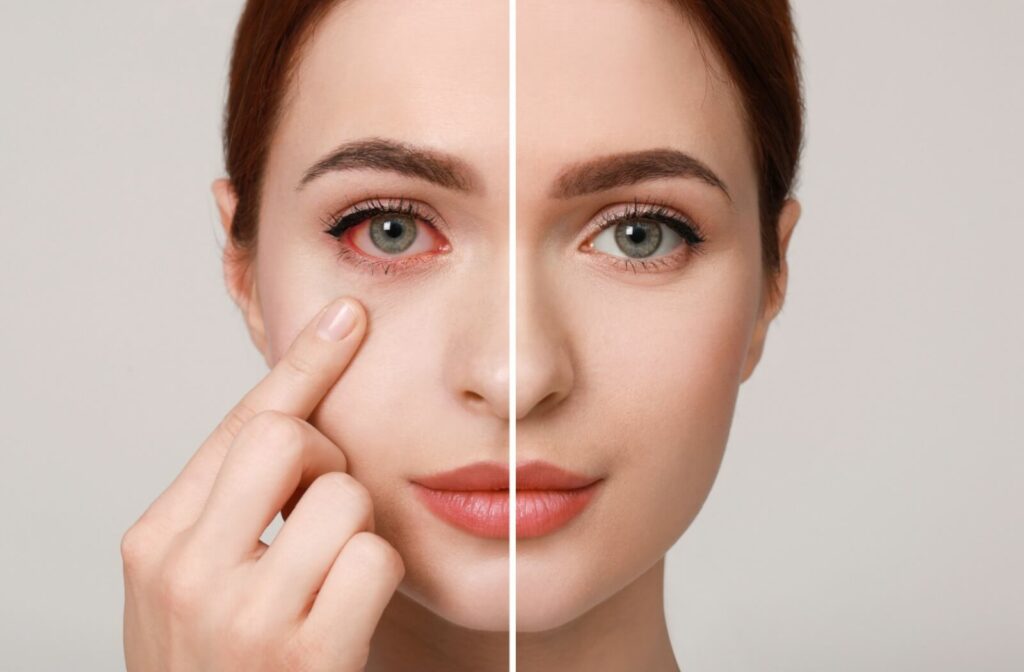Red, itchy, or irritated eyes are often chalked up to pink eye, but that is not always the case. Several other eye conditions share the same telltale symptoms, making misdiagnosis surprisingly common in both clinics and households.
Pink eye is not the only cause of red, irritated eyes. Conditions like dry eye, allergies, blepharitis, or even styes can appear similar to pink eye at first glance.
Learning the differences between these conditions helps support more accurate diagnoses and appropriate treatment plans.
Why Eye Conditions Get Misdiagnosed
Pink eye shares several hallmark symptoms with other eye irritation causes, including redness, swelling, discharge, and general discomfort. These overlapping characteristics make it challenging to differentiate between conditions without proper examination.
The conjunctiva—the thin, clear membrane covering the white part of your eye—becomes inflamed in various conditions, not just conjunctivitis. This inflammation creates the characteristic pink or red appearance that gives “pink eye” its name. However, the underlying causes and appropriate treatments vary significantly.
Accurate diagnosis typically requires examining specific symptom patterns, timing of onset, patient history, and response to initial treatments. Without this comprehensive evaluation, even experienced practitioners can mistake one condition for another.
Conditions Often Misdiagnosed as Pink Eye
Here are a few common conditions that are occasionally mistaken for pink eye:
Allergic Conjunctivitis
Allergic conjunctivitis represents one of the most frequently misdiagnosed conjunctivitis cases. When patients’ eyes react to allergens like pollen, dust mites, or pet dander, the resulting symptoms closely mirror viral or bacterial pink eye. However, the main distinguishing features include:
- Intense itching rather than burning or soreness
- Both eyes affected simultaneously (bilateral symptoms)
- Clear, watery discharge instead of thick or purulent fluid
- Respiratory symptoms like sneezing, nasal congestion, and runny nose
- Symptoms linked to specific triggers or seasonal patterns
Unlike infectious forms of conjunctivitis, allergic reactions are not contagious. Treatment focuses on antihistamines, artificial tears, and allergen avoidance rather than antibiotics. Cool compresses can provide additional relief, and identifying and eliminating trigger substances helps prevent recurrence.
Blepharitis
Blepharitis involves inflammation of the eyelids, particularly around the lash line where oil glands become blocked or infected. This chronic condition creates redness and irritation that patients often mistake for pink eye. Key symptoms include:
- Crusty buildup or flakes around the eyelashes
- Symptoms worse in the morning, often with difficulty opening the eyes
- Gritty or foreign body sensation
- Redness focused around the eyelid margins, not the entire eye
Unlike the acute onset of most pink eye cases, blepharitis develops gradually and follows a chronic pattern of flare-ups and remissions. Management includes warm compresses, daily eyelid hygiene with gentle cleansers, and sometimes antibiotic ointments or other advanced treatments suggested by your eye care provider.
Dry Eye
Dry eye syndrome has become increasingly common, particularly among patients who spend long hours using digital devices. It occurs when tears don’t provide adequate lubrication due to insufficient production or rapid evaporation. Symptoms often mistaken for pink eye include:
- Redness and irritation
- Burning or stinging sensation
- Excessive tearing or stringy mucus discharge
- Symptoms that worsen throughout the day
- Sensitivity to wind, dry air, or screens
Unlike conjunctivitis, dry eye tends to develop slowly and does not typically involve infectious discharge. Treatments range from artificial tears and warm compresses to meibomian gland expression and intense pulsed light (IPL) therapy. Devices like OptiLight by Lumenis are particularly helpful for dry eye related to meibomian gland dysfunction.

Styes
Styes develop when oil glands in the eyelid become infected, creating small, pus-filled bumps on the eyelid margin. While both styes and conjunctivitis can cause redness and swelling, the distribution and characteristics differ significantly.
Styes typically present as localized, tender lumps with surrounding redness, while conjunctivitis affects the entire conjunctival surface. The discomfort associated with styes is usually more intense and localized compared to the general irritation of pink eye.
Most styes resolve with warm compresses applied several times daily. Large or persistent styes may require professional drainage or antibiotic treatment. We recommend avoiding squeezing or manipulating styes, as this can spread infection.
Why a Professional Diagnosis Matters
Today’s optometry practices use advanced diagnostic tools to distinguish between eye conditions that could look alike. Technologies like digital imaging, tear film analysis, and meibography can uncover subtle differences that aren’t visible during a standard exam. This detailed evaluation allows for more accurate diagnoses and targeted treatment. For example, intense pulsed light (IPL) therapy is often used to treat meibomian gland dysfunction, a contributing factor in both dry eye and blepharitis.
Protecting Your Vision
If you’re experiencing red, irritated eyes and aren’t sure whether it’s pink eye or something else, it’s important to get a professional evaluation. Several common eye conditions share similar symptoms, and the right treatment depends on an accurate diagnosis. Schedule an appointment with Precision Eye Care today to get the clarity and care your eyes deserve.



